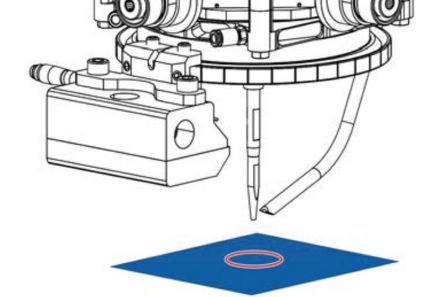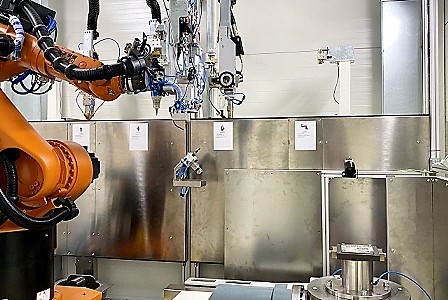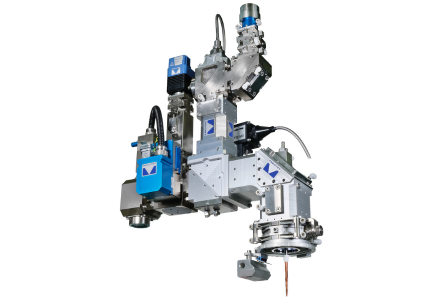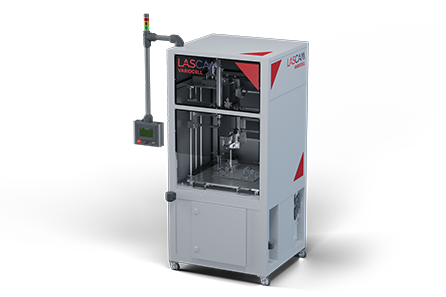Laser additive manufacturing (LAM) is the construction of a 3D metal object from a digital 3D model using laser deposition. We specialize in metal wire-feed metal LAM and/or LAM powder bed fusion using robotized laser systems with a power of several kilowatts built on the Siemens NX software platform. These systems enable a part production process utilizing up to 9 axes. Thanks to a laser with 4 independent optical outputs, it is possible to freely exchange production tooling during the production process, and thereby change the method of metallic material deposition.
Laser additive manufacturing
Advantages
- Excellent for prototyping
- High spatial precision in above than average working field
- Powder LAM for highest axis precision
- Z-Wire LAM for cavity manufacturing and internal structuring
- Surface treatment for high end material requirements
Coaxial wire laser metal deposition
Coaxial wire laser metal deposition is a process where the laser beam takes the shape of an annulus, into the center of which a nozzle feeds the deposited wire. This laser LAM process geometry has rotational symmetry, therefore it is possible to deposit material in all directions with the same laser process characteristics without the need for complex workpiece manipulation; for example, using a rotary table. Thanks to the unique Precitec Coaxprinter system with coaxial wire feeding, we can fine-tune the deposition process to a speed of up to 3 m/min, without compromising the high accuracy and homogeneity of the process throughout the working field (1x1x1 m3) of the robot arm, enabling the production of large, precise and homogeneous parts.
Metal powder deposition
Metal powder deposition is another one of the laser additive manufacturing methods, where an object is constructed by sputtering powder onto a substrate. This substrate is continuously irradiated by laser radiation, and thus the powder is welded to the substrate surface. This technology has rotational symmetry as well, and therefore enables all-directional welding, even on inclined surfaces. Another indisputable advantage of this method is the possibility of combining multiple deposited powders and creating a final product made of various different alloys. This makes it a suitable alternative for research and development of materials.
Wide range of applications
The extensive selection of materials used for laser additive manufacturing allows the user to implement a variety of processes, such as material surface treatment or product repair. Laser additive manufacturing technology also reduces the cost and time required for product design, especially in cases where conventional prototyping for a given product would be expensive or very difficult. Typical examples include products with cavities and propellers for ships or aircraft.
Our portfolio includes a standardized single-purpose Vario cell with both manual and automated part loading.
Selected projects
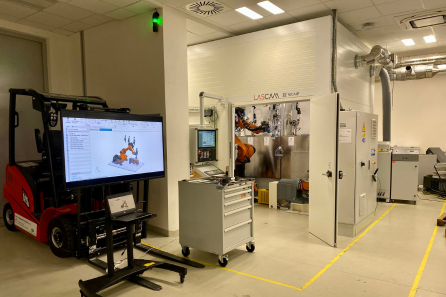
We have successfully implemented a LAM robotic cell for Industry 4.0. production, currently under development at CIIRC, CTU.

